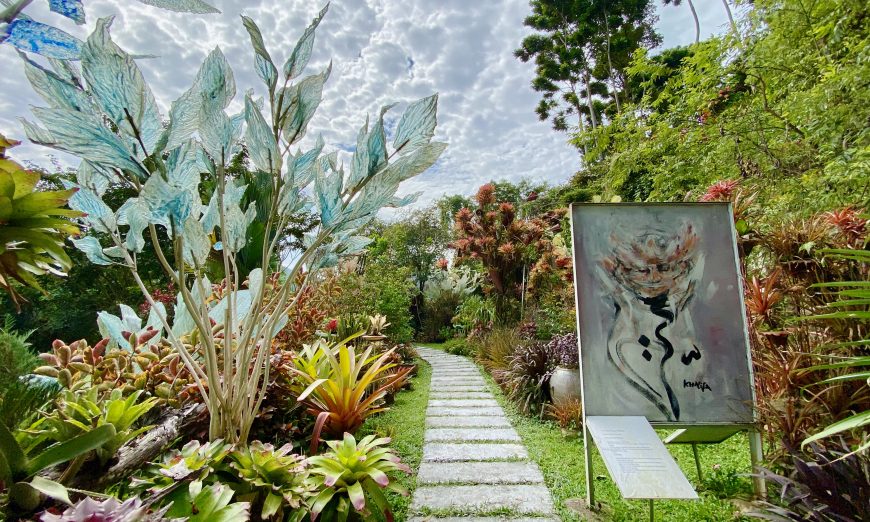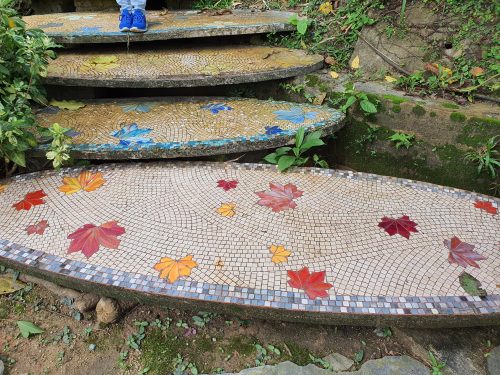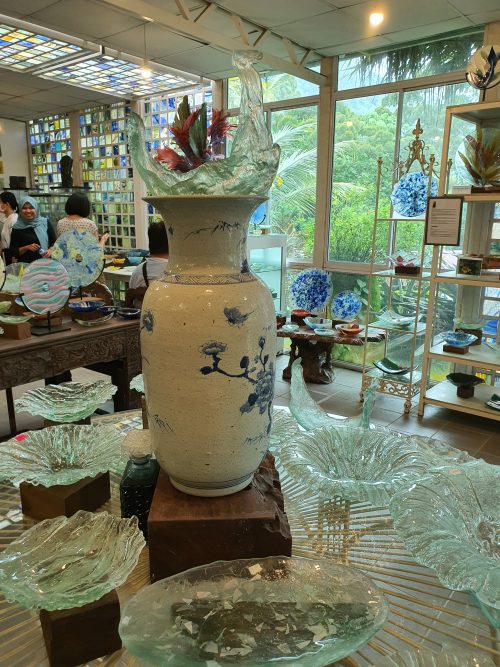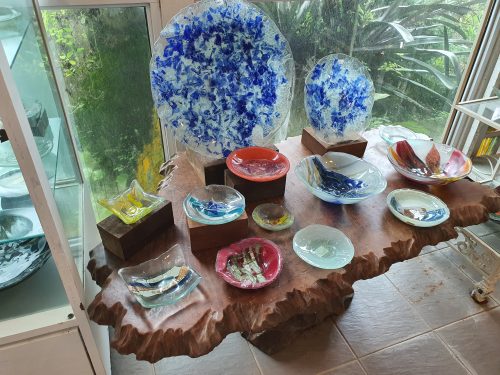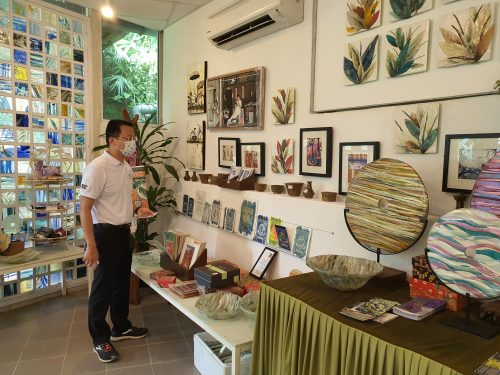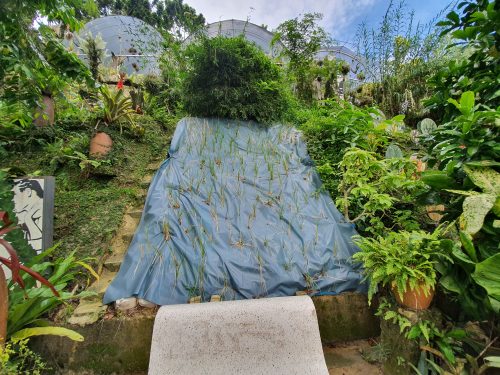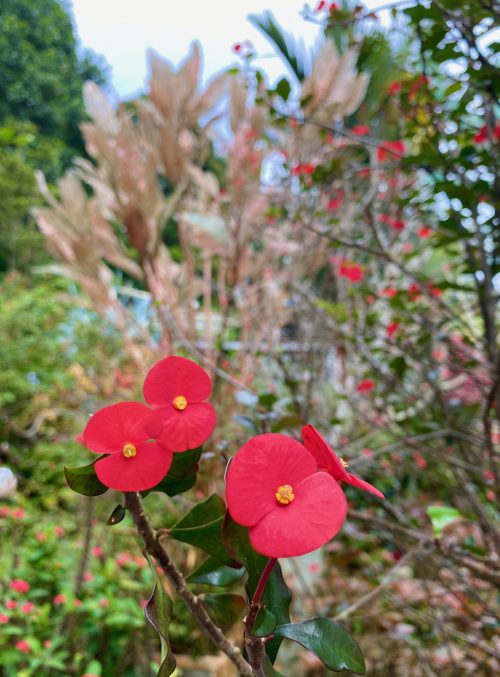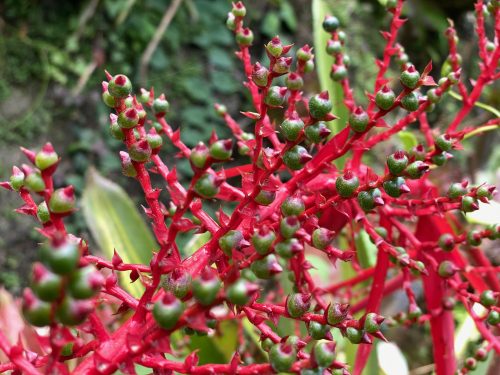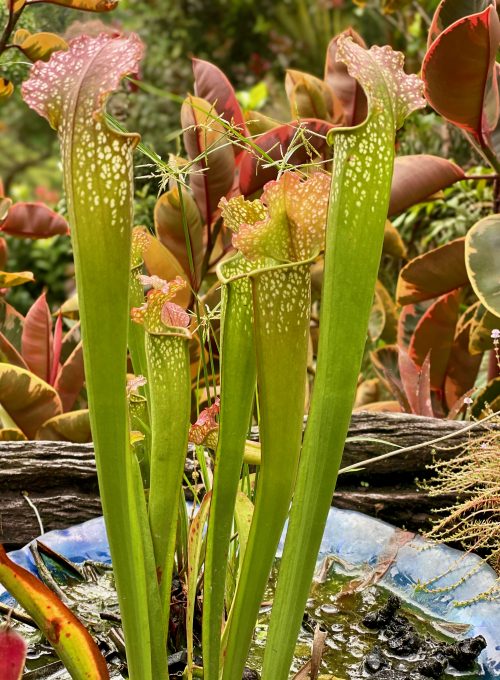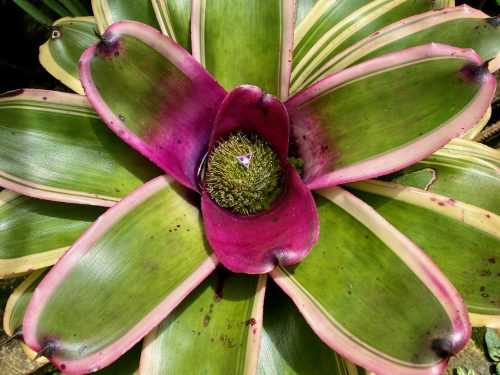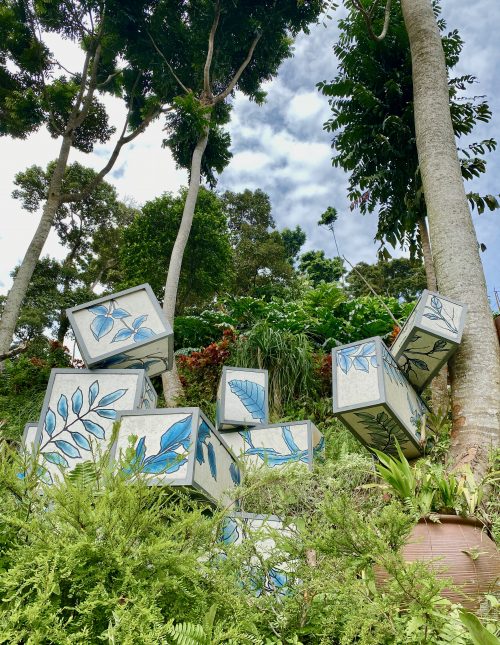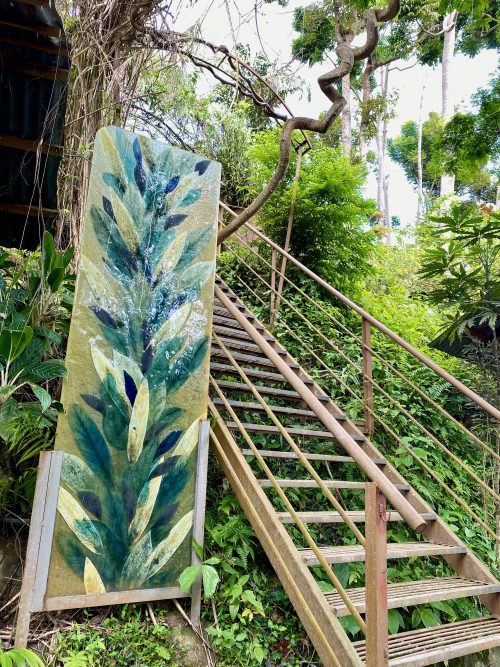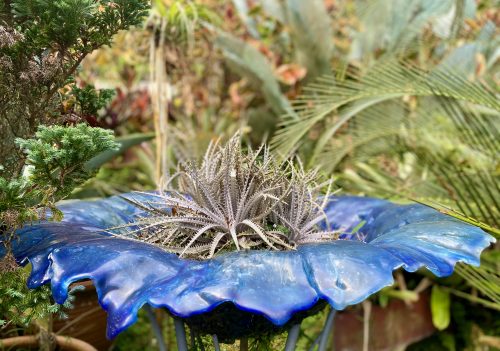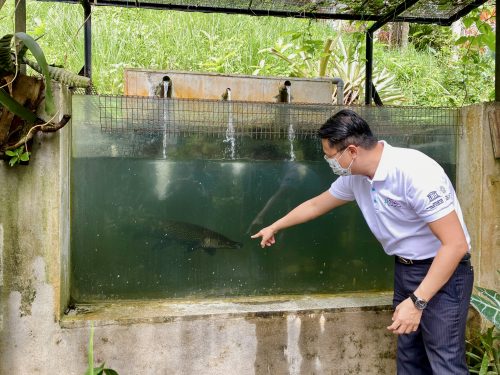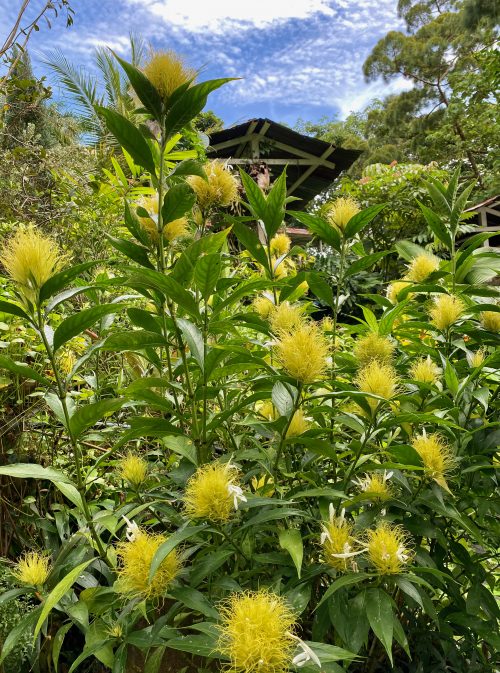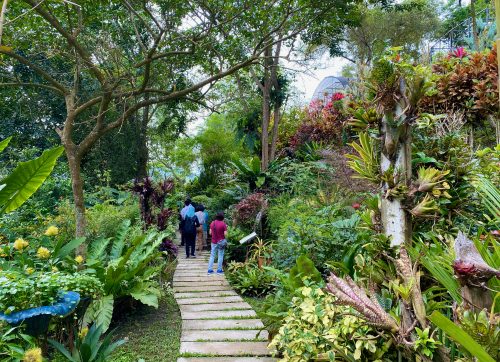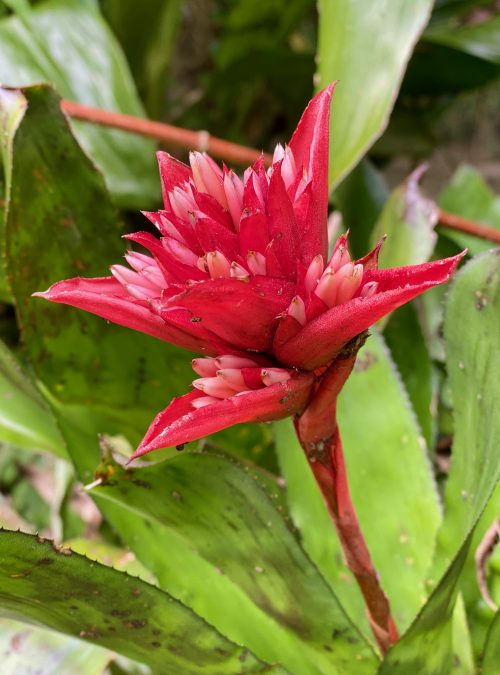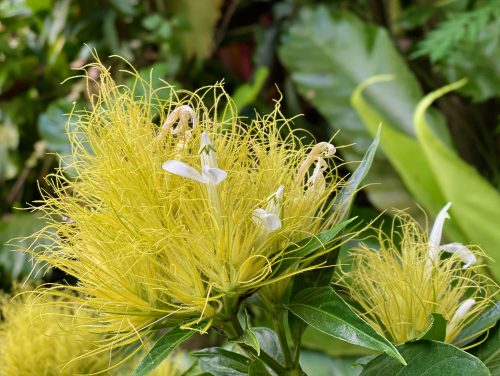A VISIT to Art and Garden in Teluk Bahang hills will more often than not leave tourists spellbound after coming face to face with gorgeous artworks amidst a variety of tropical vegetation.
The Art and Garden, which is a brainchild of glass artist Wong Keng Fuan, actually marries his two passions – art glass and horticulture.
It was opened in 2015, after three years of meticulous preparation.
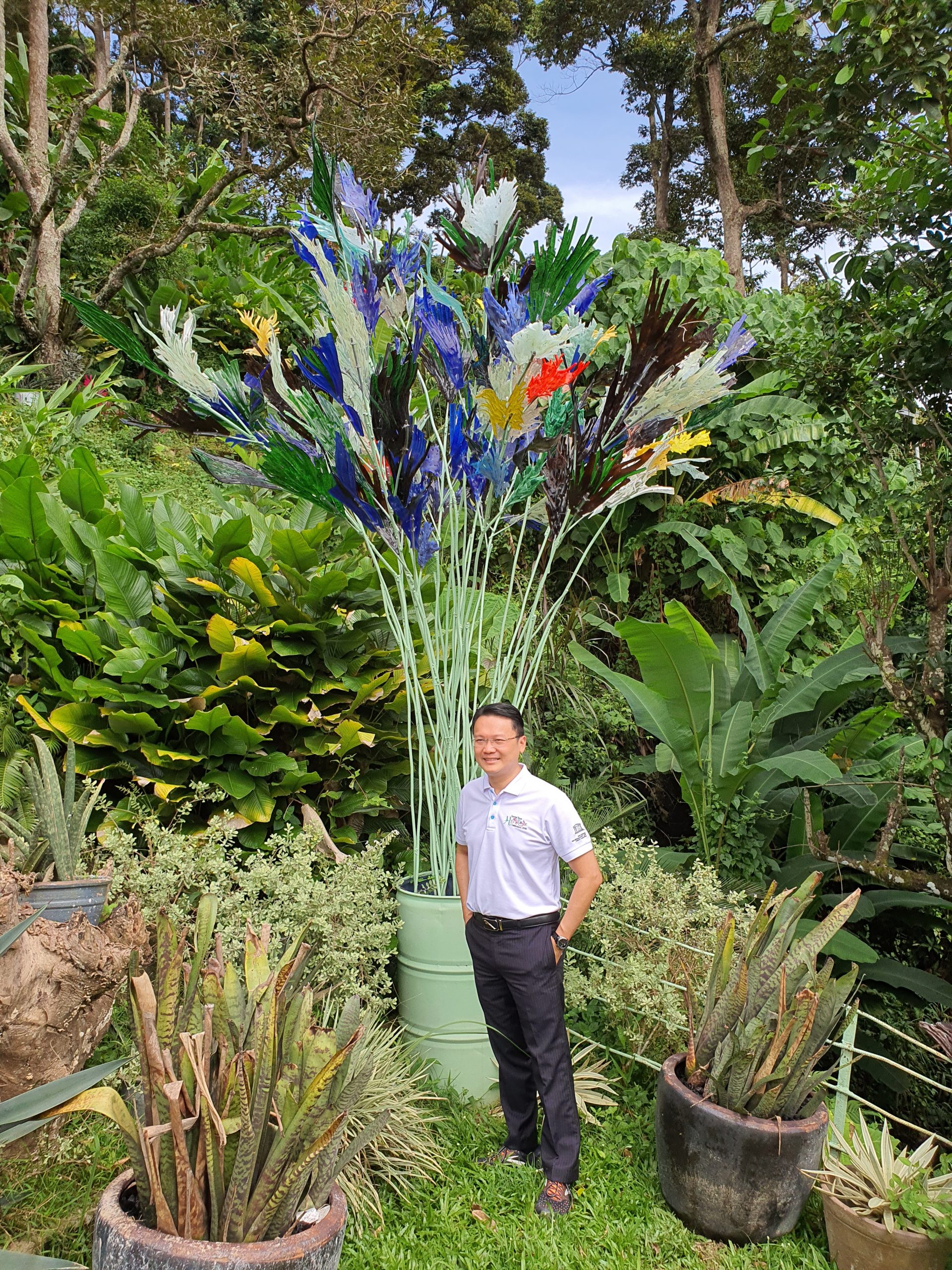 Yeoh posing with a glass tree and natural surroundings.
Yeoh posing with a glass tree and natural surroundings.
Fuan Wong, as he is better known, cleared two acres of his family-owned seven-acre durian orchard for his art and garden project.
Having been a plant collector for 30 years now, he had earlier run out of space in his home in Pulau Tikus and hence, the rationale to place the plants in the new home at the durian orchard.
Art and Garden was also then used as an event space, and unintentionally as more and more visitors came, the project has evolved into an eco-tourism opportunity.
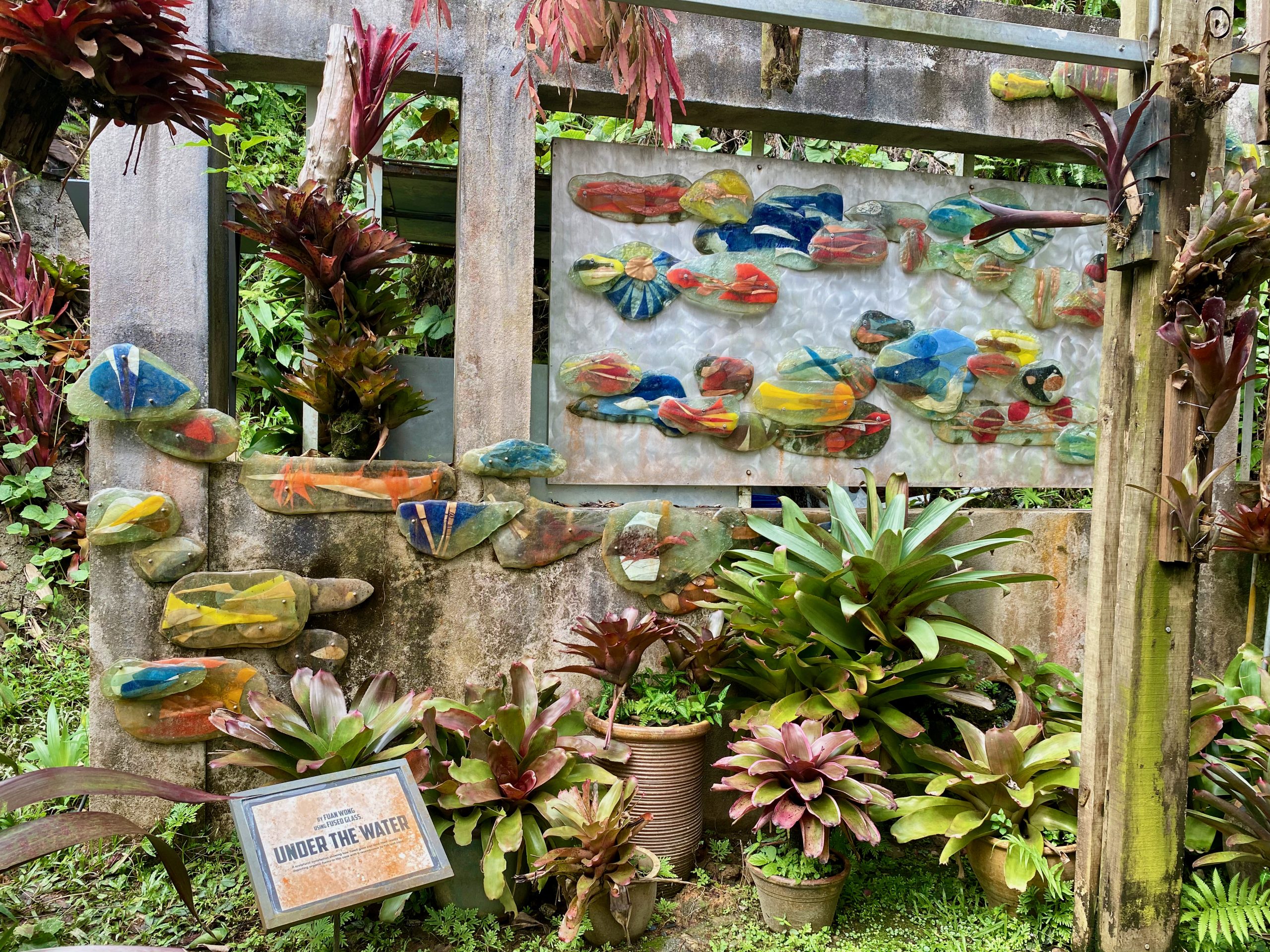
Fuan’s glass sculptures, glass trees and glass leaves, some of which are very colourful, ‘grow’ at certain points in the garden. In fact, they seem to blend in very well with the natural foliage and greenery. This makes me wonder how the self-taught artist could create a ‘tree’ out of glass.
Strolling in the beautiful tiered garden you can also see Fuan’s collection of bromeliads, air plants, ant plants, aloes, agaves, ferns, gingers, orchids, pitcher plants from North America, white bamboos and a grown variegated banana tree.
There are also some very tall and straight African timber trees, called khaya ivoriensis, which he planted six years ago. They can grow to about 40m to 50m high.
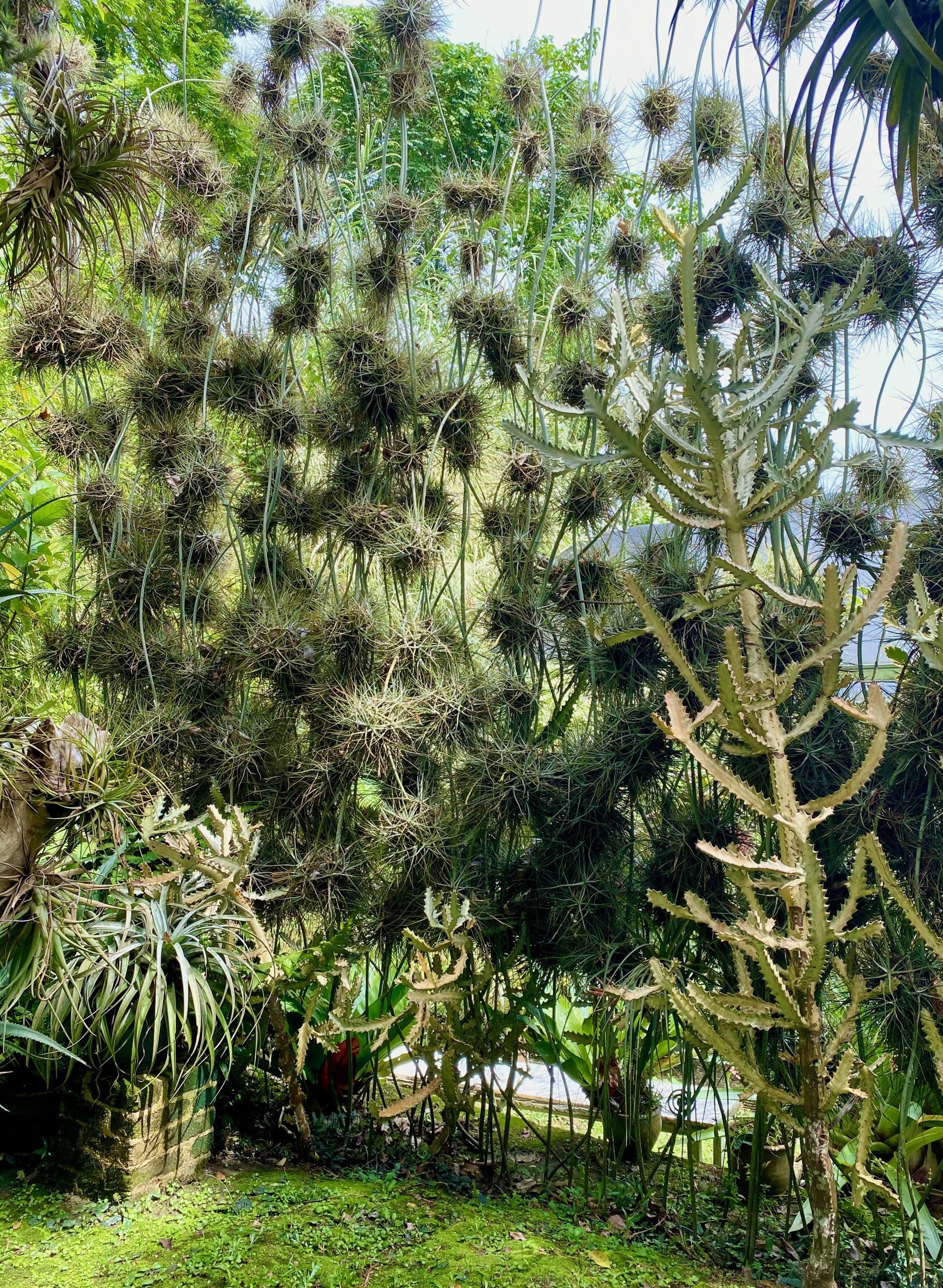 Air plants aplenty in the garden.
Air plants aplenty in the garden.
In addition to this, you will not miss the colourful mosaic steps by Adam Michalowski.
The garden, set on a hillslope, also offers fresh air, the charm of myriad blooms and a wonderful panoramic view of the secondary forest. The forest is actually cultivated as clove, durian, banana and rubber plantations by other owners.
This is also the time of the year when visitors to Art and Garden can get to see the gold leaves of the bauhinia aureifolia tree. The gold leaves feel like velvet.
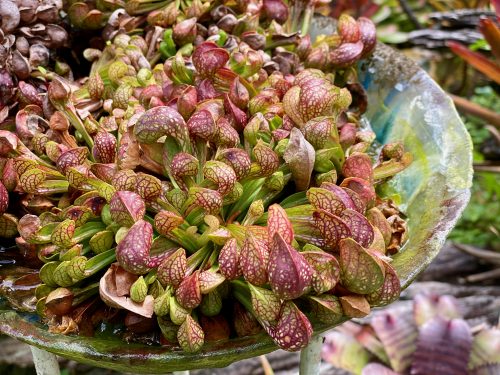
Soil erosion were seen at two spots on the hillslopes, and Fuan has spread a plastic cover each over them. The plastic covers have holes and in them, he planted vetiver grass, which has a very strong root system that can hold the ground.
The garden had previously a big collection of fish, including empurau and koi, but Fuan said, one day, otters came and finished them all from the fishponds except for one giant Alligator Gar which is kept in a big tank.
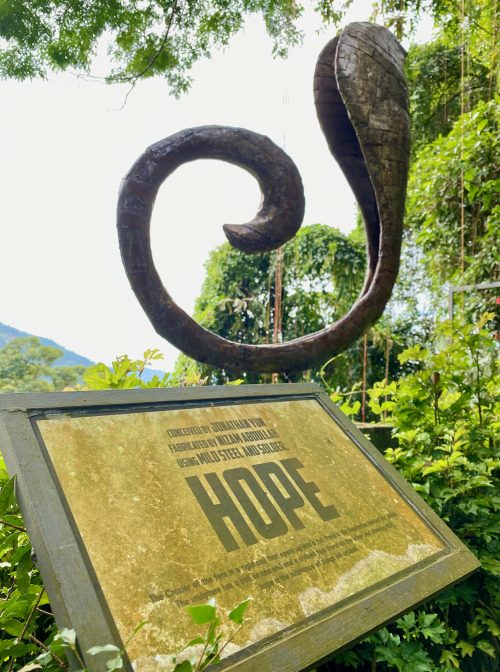
Also on display in the garden are artworks of Fuan’s friends, like street artist Bibi Chun, Englishman Tom Powell, former anesthesiologist Esther Geh, metal artist Nizam Abdullah, ceramic artist and USM senior lecturer Prof Dr Shamsu Mohamad, photographer Howard Tan and Philip Hemnell to name a few.
Without doubt, their art pieces have further spiced up the garden.
Nizam collaborated with Jonathan Yun to create a sculpture, called ‘Hope’. It depicts a hook-like crozier of a fern in a tight coil awaiting its full flowering, thereby giving rise to hope of something good in the future or of a substance of things as yet unseen. At first glance, the sculpture may look like a snake, though.
One of Powell’s contributions to the garden is titled ‘Endeavour’. The installation shows tiny ceramic men scaling up a large boulder to reflect the human desire to constantly challenge oneself and achieve success by overcoming obstacles.
On yet another boulder is an installation of white steel hens by Howard Tan, titled “So Where Were We Going?”. It was Tan’s way of showing that the confusion reigns when there is no pecking order.
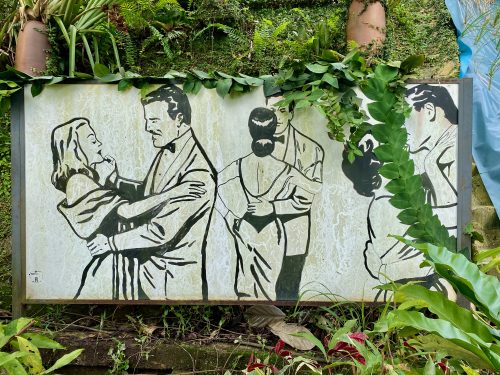
Hemnell, who was born in Ipoh to an English father and Chinese mother, contributed a painting, called the “The Dancers and Frangipani Girl”.
The front is a black and white depiction of three couples waltzing in tuxedos and formal dresses in the 1940s colonial era, while on the flipside is the ‘Frangipani Girl’ watching the scene although who or which couple she has her eyes on is anyone’s guess.
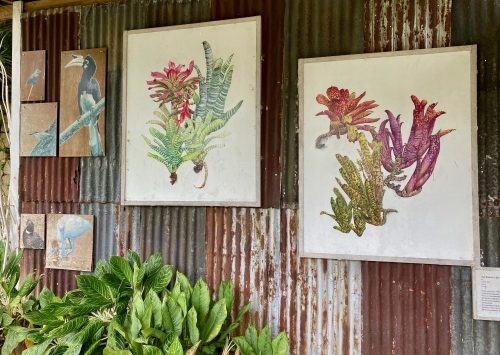
Coming towards the end of the tour you will be greeted by two murals from Sudanese Ammar Khalifa, who has been residing in Penang since December 2012, and also the works of Penang’s very talented Esther Geh, who painted bromeliads from the live ones in the garden.
Geh was also involved with the Penang Hill project and her paintings can be seen on the pillars at the bottom station.
As the weather was getting hotter and more humid, the air-conditioned gift shop would give visitors some respite. There, it showcases Fuan’s own glass sculptured creations, like bowls and plates, and others’ unique sculptured jewellery, woven mengkuang bags, handmade soaps and several other souvenirs.
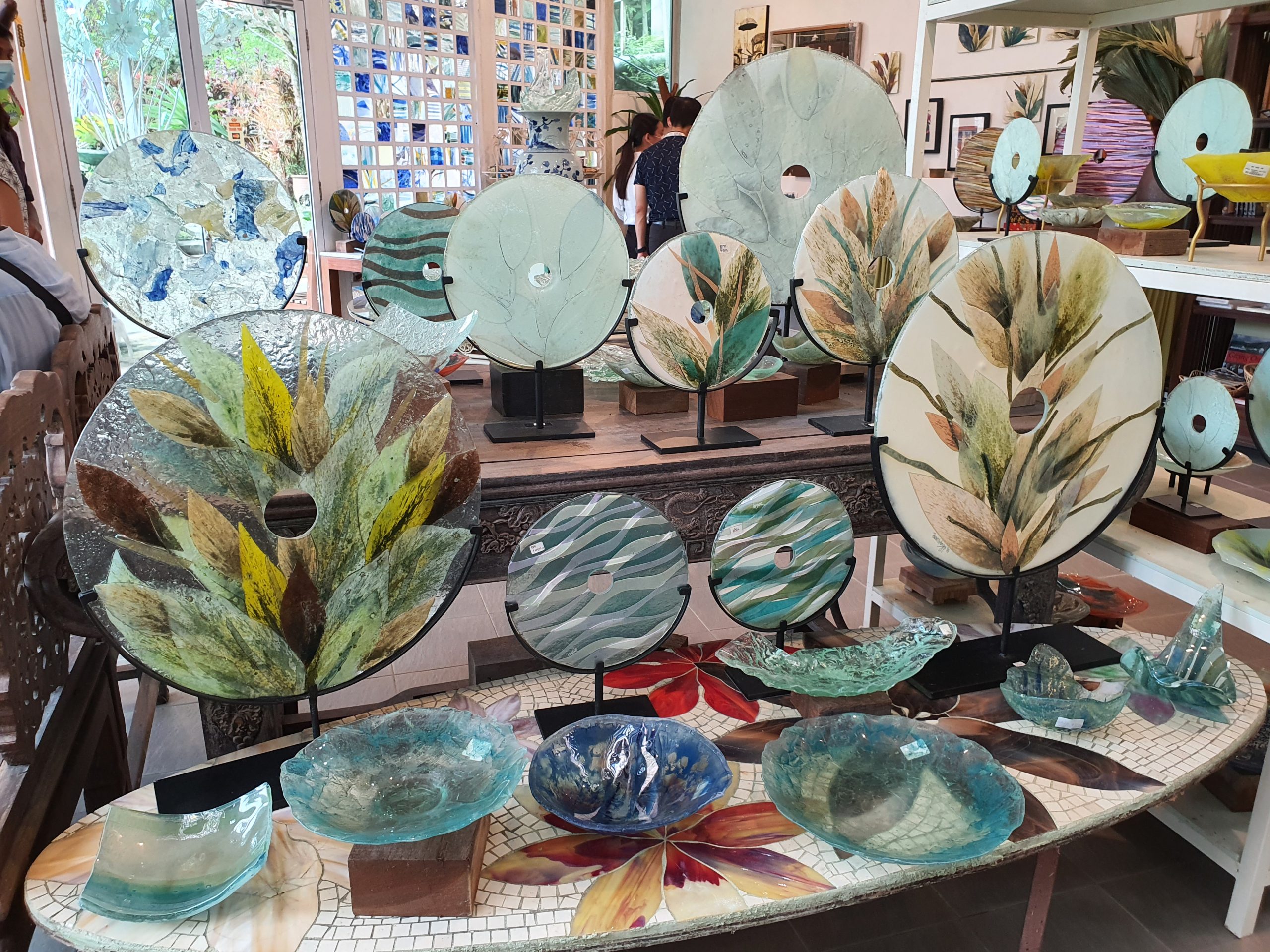
When you listen to Fuan speaks, you will know that Art and Garden is his labour of love.
“I’ve always been a glass artist. And I also love gardening, especially collecting strange plants.
“I wake up at four every morning, sometimes at three o’clock. And I cannot wait to start work.
“When I wanted to do art, everybody laughed at me. All my relatives said I would surely die of hunger. But I’ve proven them wrong.
“The most important thing is to do what will make you happy and then you will be happy,” Fuan, 60, said during a recent interview with Buletin Mutiara.
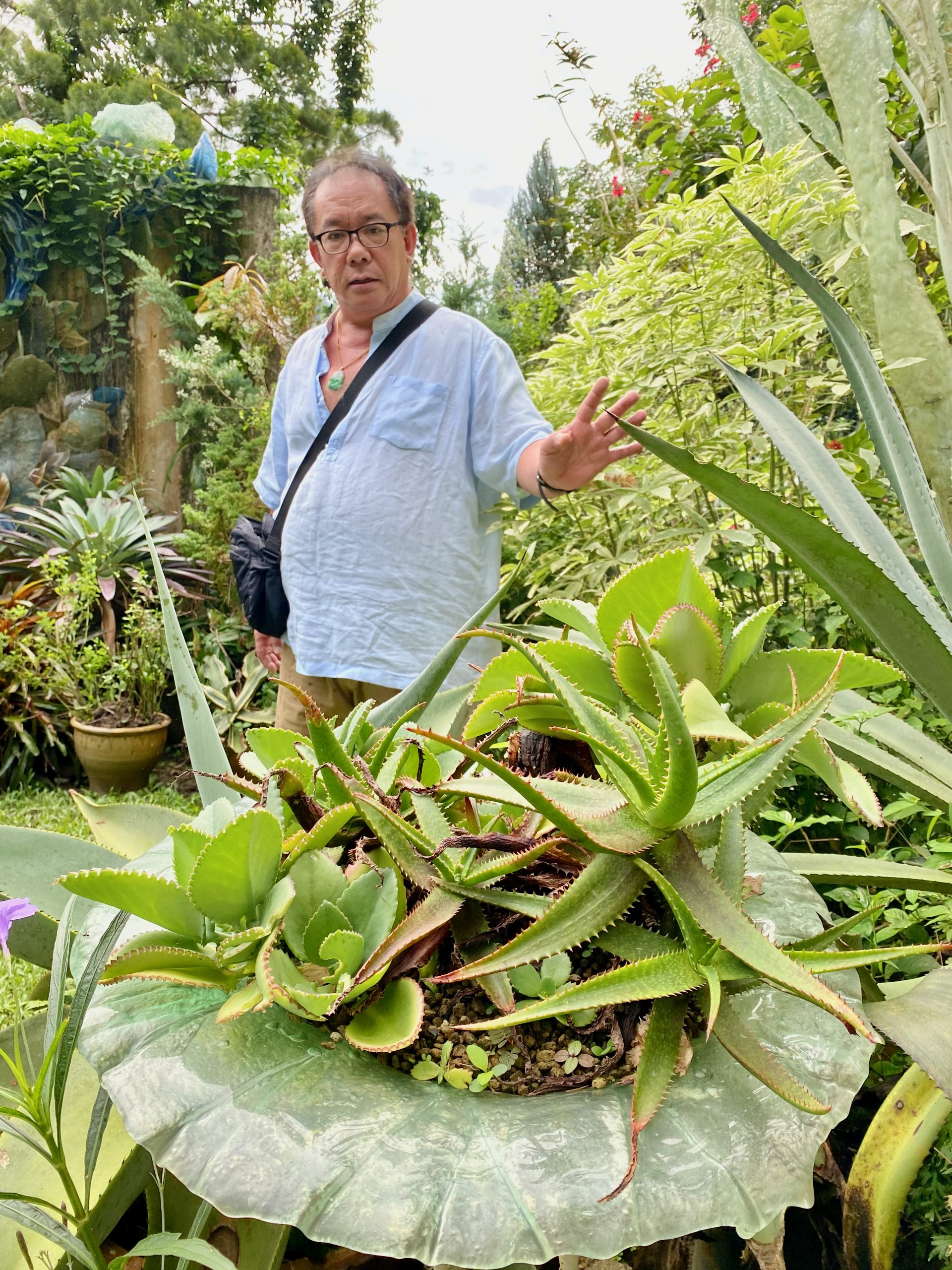
Fuan studied landscape designing for a short time in England. And most of his time were spent visiting gardens there as England has some of the greatest gardens in the world. That included the Chelsea Flower Show.
He said art is about living your life as honestly as you want to be.
“As an artist, you’ve got to live your life very properly. So, this place (Art and Garden) is really about displaying everything I have lived my whole life – all the things I have loved and have been interested in. I put it all here.
“Art is not about painting pretty pictures. The function of art is to teach people to see things differently.
“Art must be used to make young people wonder how a thing is done and to enquire, and to have the right mindset to innovate,” he said.
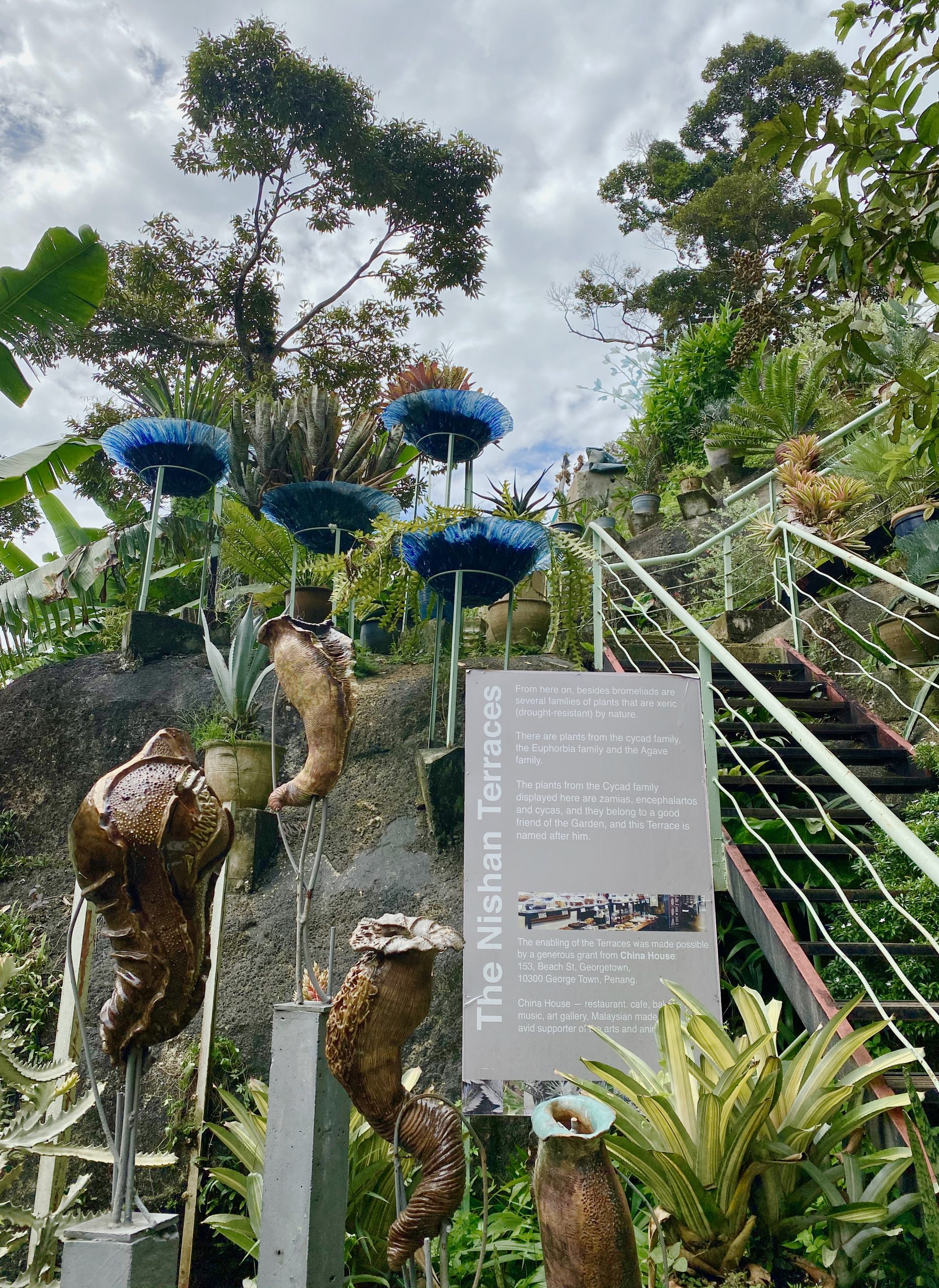
Fuan feels very blessed to come from a philanthropic family and to have a lot of other people who bought art from him.
He said underlying the whole enterprise is the supporters, including Australian Narelle McMurtrie from China House, who sponsored one of the terraces at Art and Garden.
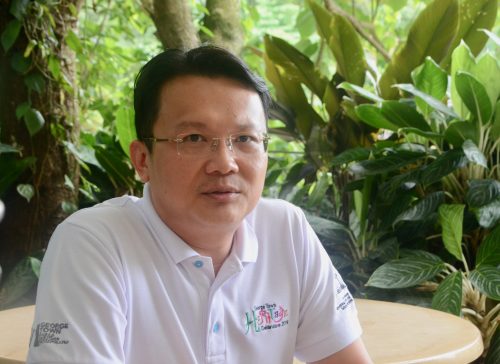
Penang Tourism and Creative Economy Committee chairman Yeoh Soon Hin, who recently visited Art and Garden, has only words of praise for Fuan.
“I appreciate how the owner synthesises nature and art. It’s a very good combination and a special tourism product that shows Penang’s uniqueness,” Yeoh said after being given a guided tour by Fuan.
“I would say that this garden is a must visit place for its beautiful glass sculptures and masterful paintings. Besides its flora, it is set on a hillside overlooking the jungles and plantations.
“It is totally in line with the concept of what we want to promote eco-tourism and also the art tourism. What we want is for people to experience nature to promote eco-tourism and at the same time to see all the artworks from various artists.”
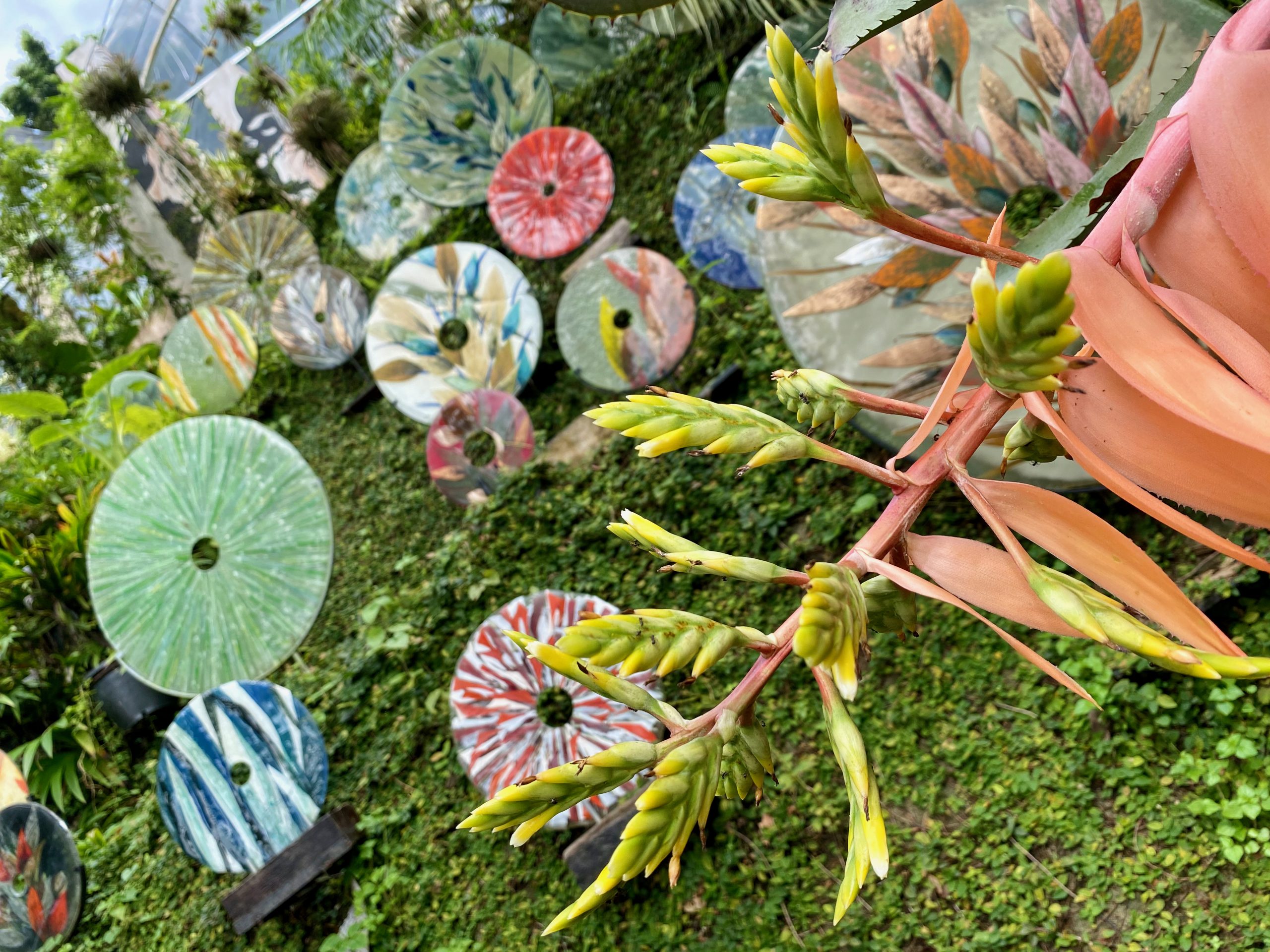
Yeoh continued: “In view of the Covid-19 pandemic, the future trend will be niche tourism or small group tourism.
“We also want to promote more on less crowded places and secluded places out of inner city to balance up tourism products in the other side of Penang island (southwest of Penang island).
“In a nutshell, this (Art and Garden) is a very creative product which simultaneously promotes nature and culture.”
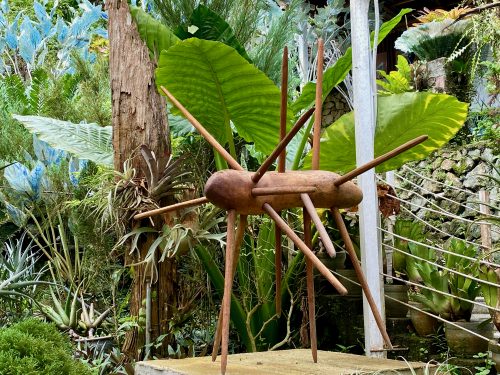
During this period of conditional movement control order (CMCO), Art and Garden is temporarily closed. Fuan, however, keeps himself busy by coming up with new ideas and building new sections.
He also sells his plants online and the proceeds are used to pay for part of his three workers’ salaries.
If there is something he wants to accomplish in future, Fuan said he would want to make the garden handicap friendly.
“I want the elderly to be able to visit this place easily. This is my biggest regret that we did not factor that in. But that would have cost a lot to widen the road. Looking back now, actually, it is not that hard and can still be done. That is my biggest dream,” he said.
It is not just art and plants that will draw tourists. The garden occasionally does lunches or dinners, offering its signature nyonya crab laksa, nyonya curry chicken with ‘roti jala’ or ‘nasi kunyit’.
For Fuan, more importantly is to explain the history behind these foods or their significance to the tourists.
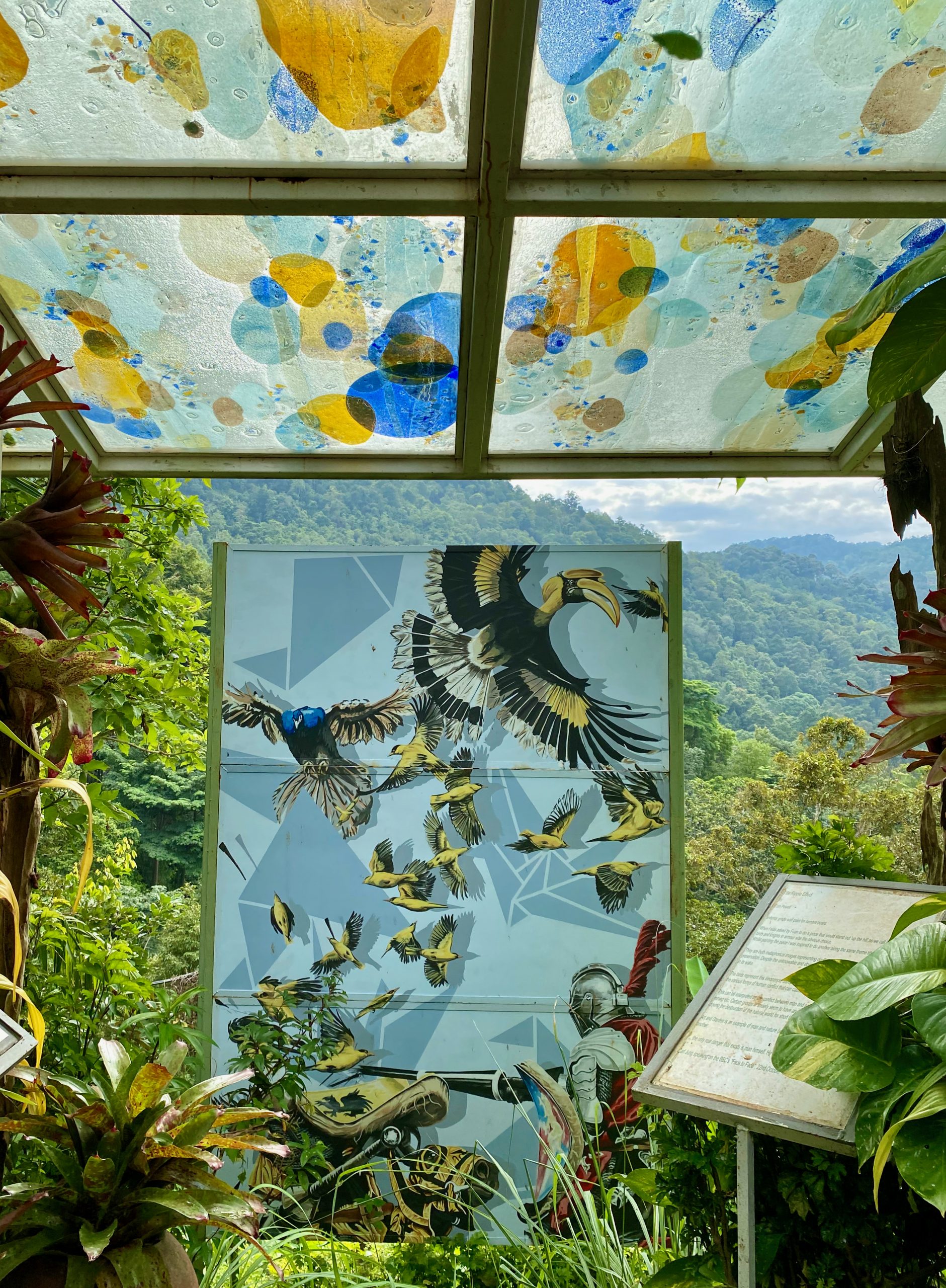
In normal times, Art and Garden opens every day from 9am to 6pm. Admission fee is RM24 for locals and RM30 for foreigners.
For nature and art lovers, this one-of-a-kind garden will be worth the visit.
Story by K.H. Ong
Pix by Alissala Thian

